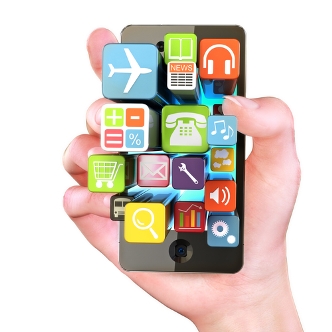It's become something of the new tech bubble for programmers; the dream of putting together a brilliant app, offering it up in the app store and waiting for it to sell a million copies at $3.99 each, or be so brilliant that Facebook, Twitter, Google, or some other major company with a ton of market cap decides to buy the rights to it and make it a feature. But as many app makers are finding out, it's getting harder and harder to sell paid applications.
One of the biggest sources of at least anecdotal evidence on this front is Contrast. Founded by David Barnard, Contrast made apps like Perfect Weather and Launch Center Pro. But Perfect Weather had some stormy skies from the word go; promotion ahead of launch and during launch looked great; Perfect Weather was even carefully timed to release around the launch of iOS 7. Several media outlets ran with the ball, noting the Perfect Weather app's features and the like, and reached number six ranking on the Paid Apps list in the U.S. App Store. It was even featured in iTunes' “Designed for iOS 7” section, which should have made it a huge deal.

Image via Shutterstock
The profits that should have been nigh-inevitable, however, did not follow. Perfect Weather launched at the same price as Launch Center Pro—just $2.99—and managed to hit the same place on the Paid Apps list. But somehow, Launch Center Pro had brought in fully four times what Perfect Weather did. Worse yet, Barnard wasn't alone. Half a dozen major app vendors were reporting that the paid apps had been falling off in terms of sales, and the position on the app charts just didn't seem to matter.
Indeed, reports from Distimo and App Annie—analytics firms that focus on apps—show that app revenues are steadily climbing. But if paid apps are trending downward in terms of revenue, the only thing left is in-app purchasing. It was subsequently suggested that no one was buying apps any more, but rather moving to free and freemium apps. Such a suggestion was quickly backed up with the notice that, in February 2013, 76 percent of Apple App Store revenue in the United States came from in-app purchases. Asian markets have an even more pronounced preference at 90 percent of revenues coming from that source.
But where the in-app purchasing market is really showing its true colors is in terms of games. We know the in-app purchasing system is skyrocketing in popularity, but the distribution of apps that use in-app purchasing is clearly weighted in favor of games. Looking at breakdowns of apps that use in-app purchasing versus those that don't, the amount of revenue taken in for non-gaming apps has remained almost static between September 2012 to June 2013. But the amount of revenue pulled in on gaming apps with in-app purchases has more than doubled in that same time frame.
There are exceptions, however, like Teleprompt+ for iPad and the PCalc app, both of which have seen the majority of sales come from full app purchases. Of course, here, it's a lot more about the market, but that's still likely cold comfort to paid app makers who are seeing revenues fall. But understanding—and taking advantage—of these trends will be paramount to keeping alive as an app developer.
Edited by
Alisen Downey  QUICK LINKS
QUICK LINKS